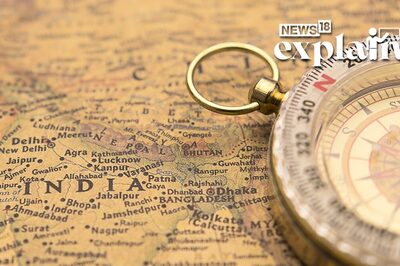
views
Over the past decade, India has witnessed a revolution in the increase and emphasis on social schemes by the Government of India. Each year has come with new or revamped programmes, consistently working towards the enhancement of citizens’ ease of living and the drive for large-scale economic upliftment. Rooted in the thought of inclusive development and economic upliftment for all, a closer examination of these programmes helps us evaluate the holistic development of rural and urban areas across this vast country. India has, for long, held the promise of equitable economic development. Over the past few years, the implementation of government schemes for the health and well-being of citizens has picked pace. There is a sense of urgency in governance and technology is being leveraged to take governance to the doorstep of people. The schemes have been designed as consumer-first initiatives that seek to empower those at the end of the line. The system has been able to transform lives and empower local communities, laying the foundation of a new India where access to basic services is fast becoming the norm.
People in rural areas have, for years, battled the odds to access clean water and sanitation facilities. This has affected the rural economy, as numerous citizens suffered from difficulty in accessing necessities. Procuring clean and safe water has been a cause of daily drudgery for many at the grassroots, especially since it is often the women and children in rural households who are responsible for collecting water. Lack of access to clean water causes waterborne diseases which have an economic cost of approximately USD 600 million a year in India, reflecting the dire need to facilitate the availability of clean water and remove hurdles to economic development.
In response, the Government of India has helmed the world’s largest behaviour change programmes for water, sanitation and hygiene (WASH) – the Swachh Bharat Mission (SBM) and the Jal Jeevan Mission (JJM) –building public infrastructure at an unprecedented scale, at a brisk pace, and in a time-bound manner.
In 2019, India achieved an incredible milestone with all villages across the country declaring themselves open defecation free (ODF) with the construction of over 110 million individual household toilets since the launch of the SBM in 2014. In the same breath, with only 32 million households connected to clean water through connectivity at the time, the Jal Jeevan Mission was launched in 2019, a large-scale public infrastructure development programme, to provide clean water through tap water connectivity for all rural households by 2024. Ever since, authorities in the country have been working tirelessly to get the total coverage of tap water connections to 113 million households, as on date.
Further, acknowledging that access to clean water is incomplete without sustained services for sanitation, and solid and liquid waste management, phase II of the SBM was launched in 2019 with an aim to enhance all villages to ‘ODF Plus’ status, i.e., villages with universal access to safe sanitation facilities and effective solid and liquid waste management. As of August 2022, over one lakh villages declared themselves as ODF Plus.
These remarkable progress numbers, supplemented by various third-party impact findings, have been the result of what the government has termed as the 4 Ps: (i) Political leadership – with the Prime Minister himself leading both national flagships, (ii) Public financing – a cumulative Rs 5 lakh crore allocated at the central level for the overall implementation of the JJM and phase II of the SBM for 2020-2024, (iii) Partnerships – across the government, civil society organisations, development partners and the private sector, and finally, (iv) People’s participation – perhaps the most integral to the success of the two missions, ensuring that WASH is everybody’s business.
The movement manifested in India over the last decade for WASH is palpable. The programmes are also evolving with changing needs such as the importance being placed on source sustainability and water efficiency under the JJM. The schemes aim to achieve good health and well-being for all Indians and reduce inequalities in society. Their structure also seeks to create an ecosystem that empowers citizens at the bottom of the pyramid. Water governance systems that empower women have been put in place across villages and concerted efforts have gone into empowering women and making them a pivotal part of the planning and implementation stages.
With the target deadline of 2030 to achieve the Sustainable Development Goals approaching, it is safe to say that with the SBM and JJM well placed to achieve SDG 6.1 and 6.2 six years before the deadline, the world could use the learnings and experience of this mighty nation to further the global agenda for water and sanitation for all.
The author is WASH Specialist, UNICEF India. The opinions expressed in this article are those of the author and do not necessarily reflect the policies or views of UNICEF.
Read all the Latest Opinions here




















Comments
0 comment